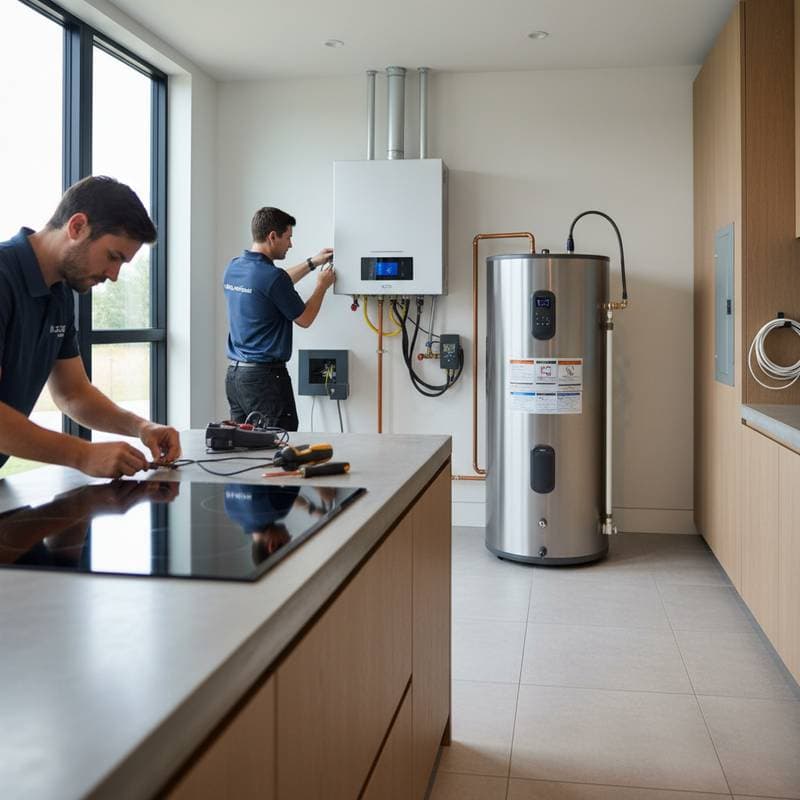Key Points
- Sealing your home's thermal envelope properly reduces heating and cooling costs by up to 50 percent.
- Air leaks near windows, doors, and attics represent the primary sources of energy loss.
- Professional air sealing and insulation improvements recover their cost within a few years via lower HVAC usage.
- Energy audits identify specific locations where sealing yields the highest returns.
Understanding the Home Envelope Challenge
As a green building professional, I have observed many homeowners struggle with escalating utility bills even with efficient HVAC systems. Consider a scenario where the furnace operates continuously on cold nights, but warmth escapes through unseen attic cracks. Similarly, the air conditioner labors on humid days, yet cooled air leaks from faulty vents. These problems stem from an inadequately sealed home envelope, the barrier that maintains conditioned indoor air separate from external conditions.
If such issues sound familiar, solutions exist. Enhancing your home's envelope stands as one of the most effective measures to lower HVAC expenses and increase comfort. Based on extensive field experience, a well-sealed home maintains consistent temperatures, reduces noise, and promotes better health. It consumes less energy overall, benefiting both finances and the environment.
Sources of Energy Inefficiency
Homes require some air exchange, but excessive flow through cracks, gaps, and joints rapidly diminishes performance. The U.S. Department of Energy reports that air leaks account for 25 to 40 percent of wasted heating and cooling energy. Thus, a high-performing HVAC system still loses value if the building envelope permits escapes.
Typical vulnerable areas encompass:
- Attics and rooflines, where insulation voids permit heat to exit living areas.
- Windows and doors featuring deteriorated weatherstripping or incomplete frames.
- Basements and crawl spaces, through which air infiltrates rim joists and foundation fissures.
- Ductwork that releases air prior to delivery at vents.
As these minor breaches accumulate, they foster ongoing swaps between indoor and outdoor air. Consequences include fluctuating temperatures, imbalanced humidity, and elevated HVAC requirements.
Steps to Achieve an Effective Seal
A properly sealed envelope functions like a custom-fitted barrier, retaining conditioned air while protecting against external variations. Attaining this requires focused efforts in air sealing and insulation.
-
Conduct a home energy audit. Professionals employ blower door tests and infrared cameras to locate leaks precisely. Costs range from $200 to $500, an investment that highlights priority upgrade sites.
-
Address major leak sources initially. Focus on attics, basements, and outer walls. Apply foam or caulk to seal around pipes, outlets, and structural joints to curb heat loss right away.
-
Incorporate or enhance insulation. With air flow controlled, insulation ensures thermal steadiness. Options such as cellulose or spray foam provide superior R-values for enhanced heat resistance.
-
Secure ducts for optimal performance. Duct leaks squander 20 to 30 percent of treated air. Employ mastic sealant or foil tape on connections, followed by insulating wraps for further safeguarding.
-
Incorporate balanced ventilation. Sealing tightly avoids stale air buildup. Energy recovery ventilators or heat recovery ventilators sustain air quality while conserving energy.
Practical Recommendations for Enhanced Efficiency
Subtle elements distinguish standard sealing from superior outcomes. Consider these proven strategies:
- Select appropriate materials. Silicone caulk endures exterior exposure, whereas latex varieties suit indoor seams. Expanding foam fills substantial voids effectively.
- Examine weatherstripping annually. Renew it upon signs of wear or compression to avert drafts that burden HVAC operations.
- Focus on attic access points and stairways. These frequently lose more air than anticipated. Install gaskets and insulated panels for rapid gains.
- Perform post-sealing infrared assessments. Such scans verify effectiveness and illustrate diminished heat escape.
- Record modifications for property value. Prospective buyers appreciate eco-upgrades, and a sealed envelope elevates energy assessments.
Investment and Return Expectations
Drawing from practical applications, full air sealing and insulation projects for typical homes cost $1,500 to $5,000. Although initial outlay appears significant, benefits materialize quickly. Owners often recoup expenses in three to five years from energy reductions alone. A fortified envelope cuts HVAC operation by 30 to 50 percent and may extend equipment longevity by five to ten years.
Financial gains aside, sealed homes offer serene environments and superior air purity. By curbing external contaminants and moisture entry, they foster healthier living conditions. These advantages rival the monetary rewards in importance.
For certifications like LEED or ENERGY STAR, envelope integrity influences scores substantially. Auditors assist in verifying improvements to qualify for rebates and meet standards.
Adapting to Regional Conditions
Local climates dictate unique sealing priorities. Humid regions demand vapor management to avoid moisture accumulation. Cold areas benefit from airtight seals combined with vapor retarders to prevent condensation on chilled surfaces. Dry locales gain from reflective insulation and radiant shields to alleviate cooling demands.
Tailor selections to your setting, as advised by green building expertise. Closed-cell spray foam excels in damp environments by repelling water, while blown-in cellulose fits arid, moderate climates. Success depends on aligning techniques with your home's specific conditions for enduring performance.
Implementing Sealing Improvements
To substantially lower HVAC costs, initiate with an energy audit and outline a staged plan. Tackle reachable zones like attics and basements first, progressing to walls and ducts. Maintain records, images, and invoices to monitor progress and returns.
For intricate work, consult certified green building specialists through reliable channels for obligation-free estimates. These experts apply sophisticated diagnostics and adhere to regional codes. Collaboration with qualified professionals guarantees tangible outcomes and a more durable residence.
Envision entering your living space on a hot day with air evenly distributed, the HVAC operating softly, and bills steadily decreasing. Such reliable comfort arises from a sealed envelope. Strategic enhancements today position your home for optimal efficiency and HVAC savings of up to 50 percent ahead.










